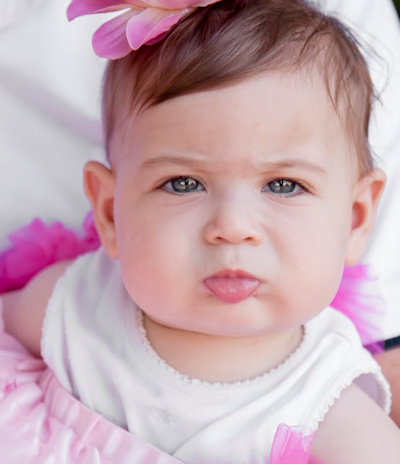
A baby’s visual system develops gradually over the first few months of life. They have to learn to focus and move their eyes, and use them together as a team. The brain also needs to learn how to process the visual information from the eyes to understand and interact with the world. With the development of eyesight comes also the foundation for motor development such as crawling, walking and hand-eye coordination.
You can ensure that your baby is reaching milestones by keeping an eye on what is happening with your infant’s development and by ensuring that you schedule a comprehensive infant eye exam at 6 months.
The AOA recommends that all babies have an eye exam by 6 months of age in order to be sure that the child is seeing properly, developing on track and to check for conditions that could impair vision (such as strabismus/misalignment of the eyes, farsightedness, nearsightedness, or astigmatism) or cause other health problems.
Here is the general progression of vision development in the first year of life. It is important to know that many babies fall outside of the normal progression and that reaching these milestones does not mean that an infant eye exam should be skipped.
1 month: Babies are just beginning to be able to focus on objects that are close - between 8-10 inches away. You may notice that your baby’s eyes don’t always work together and that one may drift inward or outward from time to time. If this is happening on occasion, there is no need for concern, however if you notice that the eyes are largely misaligned the majority of the time, consult with an eye care professional.
2-3 months: Babies will begin to follow objects and to reach for things they see in front of them. They will also learn to shift their gaze from one object to another without having to move their head.
4-6 months: By six months, babies are starting to be able to see more accurately and follow moving objects better. Their depth and color perception, eye teaming and alignment should be developing at this point. This is when you should schedule an eye exam to evaluate for visual acuity and eye coordination. The doctor will also check for the health of the eyes and look for anything that could interfere with normal development.
7-12 months: The last half of the first year is when infants start to really develop depth perception and hand-eye coordination. This is when you also need to be more vigilant about eye injuries as babies are starting to move around and explore their environment. Also keep a lookout for Strabismus or misalignment of the eyes. It is important that this is detected and treated early, otherwise it could lead to amblyopia or lazy eye, in which one eye does not develop properly. Lazy eye can lead to permanent vision problems if not corrected.
Since the early development of vision is critical for future eyesight, learning and motor skills, if you have any concerns or questions about your baby’s eyes, contact your eye care professional immediately. Early treatment of vision and eye problems is often able to prevent developmental delays and permanent vision problems for the future.
